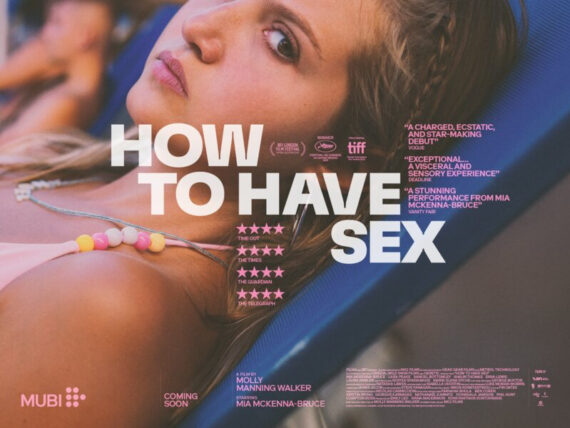By Helen Tope
Applying a freshly creative approach, documentary The Real Charlie Chaplin examines the life and career of film legend, Charlie Chaplin. A true icon of cinema, Chaplin’s image is indelible. The wide eyes, always seeming on the brink of tears; the twitches; the walk that can be imitated but never surpassed. These elements are so familiar we feel as if we know Chaplin, but it is this certainty that the documentary seeks to challenge.
The Real Charlie Chaplin begins by debunking assumptions, most notably Chaplin’s development of the Tramp character. As you might expect, there is no one straight answer – even from Chaplin himself. The composite of real-life impressions and other comedians’ work is closer to the truth, than the notion of Chaplin originating the character from scratch. Literally borrowing elements of the costume from fellow comics (Fatty Arbuckle’s oversized trousers, Chester Conklin’s coat straining at the seams), the Tramp is a piecing together of influences. Even the smudgy moustache can be traced back to film actor, Mack Swain.
Just as the Tramp isn’t a result of organic process, the facets of Chaplin’s persona require a shifting away from traditional format. Directors Peter Middleton and James Spinney are working in the shadow of the 1985 Chaplin biography by David Robinson, but the documentary, instead of treading familiar ground, uses new archive material to illuminate the corners of Chaplin’s world. The overall picture becomes more complicated, but also more real.
Being even-handed with Chaplin is not a straightforward task, either. His early life reads like a Dickens novel. Born in 1889, Chaplin experienced a childhood of abject poverty and upheaval, as his mother’s mental health deteriorated. Discovering early on a talent for making other children laugh, Chaplin’s ascent through the comedy ranks is meteoric. It plays to all our sympathies. Regardless of the borrowed elements that make up the Tramp, on Chaplin it all comes to life. A boy who grows up with nothing becomes the biggest film star in the world. As a narrative, it’s pretty irresistible.
Chaplin’s artistic achievements – a mastering of silent film through the connective power of story and character – are given their due here. The film considers the ideas that made Chaplin a hit. A profound mistrust of authority (the Tramp booting a policeman in the behind was a guaranteed laugh); sentimentalism and vulnerability (the emotional high-stakes of The Kid and City Lights). Chaplin’s aim was, in a film without words, to find common ground. These were ideas lifted straight from his own childhood (his studio custom-built sets that mirrored the slums Chaplin grew up in), and from observing the world around him. Chaplin’s winning formula, coupled with enormous charisma and a mesmeric personality, only came unstuck when silent films were phased out in favour of new technology: the talkies. The third act of The Real Charlie Chaplin looks at how the man and the artist begins to unravel.
Resisting the technology for as long as he could, Chaplin was only moved to talk as he witnessed the uprising of fascism in Europe. Releasing The Great Dictator in 1940, Chaplin makes every word count during an impassioned speech, playing straight to camera. It is one of film’s defining moments, and Chaplin’s clear alignment with the political left put him under the scrutiny of FBI director, J. Edgar Hoover.
The film plots Chaplin’s downfall using audio recordings from interviews and a disastrous press conference. It also features reconstructions: the 1966 interview with Life magazine; and a charming recreation of an interview with Chaplin’s childhood friend, Effie Wisdom (played by Anne Rosenfeld). Usually, reconstructions are the weak point of a documentary: either over-dramatised or lacking an authentic feel. But here, Middleton, Spinney and co-writer Oliver Kindeberg have created smartly cohesive moments, sandwiched between film and archive footage. The interview with Effie is particularly successful – Rosenfeld captures the undaunted spirit of a woman whose early life, like Chaplin, was all about the business of survival.
The documentary succeeds because it really does look into the neglected areas of Chaplin’s biography. His wives, for example, are given far more screen time here and the findings do not reflect well on Chaplin. Accusations of abuse draw a Chaplin who is acerbic, self-centred and unable to commit to intimacy until much later in life. It is a reading of the star that, in a post #MeToo era, comes full circle.
It is safe to say that the “real” Charlie Chaplin never quite emerges – and that is entirely the point. Middleton and Spinney have instead created a multifarious view of Chaplin. On one side of the coin, we have the clown, charmer and poet. On the other, we have the artist who got rich copying other people’s ideas; the abuser that tried to silence wives and partners with his enormous wealth and influence. All are the true Chaplin, all at once. It is the inability to capture a true likeness that, far from making the documentary a failure, makes it a richly rewarding experience.
The Real Charlie Chaplin is playing in the cinema Sat 2 – Wed 6 April.








Comments
No comment yet.